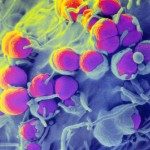Link to Pubmed [PMID] – 20728521
Vaccine 2010 Oct;28(42):6930-41
HIV-Tat based vaccines have been proposed as an attractive option to prevent or treat AIDS. A vaccine to induce optimal anti-Tat neutralizing antibody responses was designed by inserting this protein, or its dominant B-cell epitope, into the CyaA vector, which targets dendritic cells (DC). Tat was inserted into various sites of CyaA, including regions that do not translocate into the cytosol of the targeted DC. The presentation of the Tat CD4(+) T-cell epitope delivered by the CyaA-Tat proteins was observed with a recombinant CyaA in which the entire AC domain was replaced by the entire Tat protein (Tat-Δ373 CyaA) but was abolished with large deletions of the N-terminal region. Moreover, CyaA carrying multiple copies of the dominant Tat: 1-21 B-cell epitope were shown to induce high titers of anti-Tat antibodies, even after a single immunization, that persisted up to 10 weeks post-immunization.

